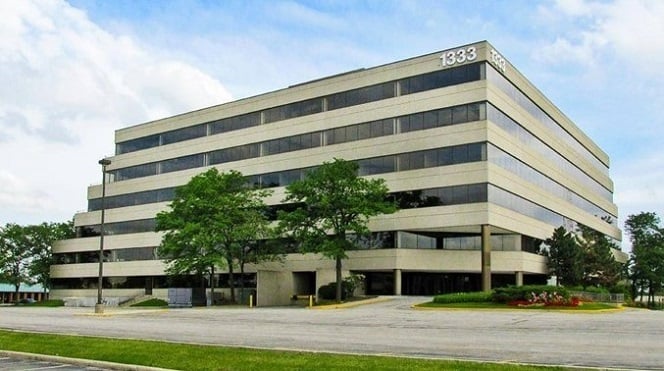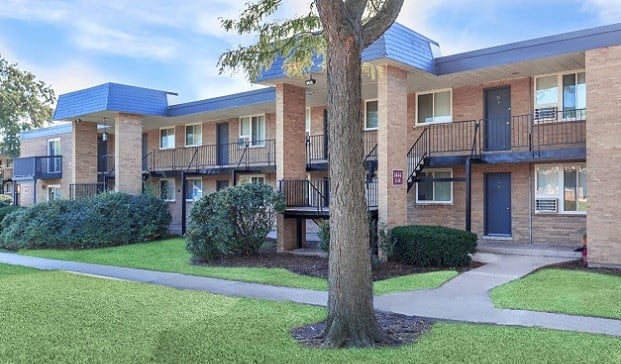The past few years have seen dramatic changes in the way investors have approached the commercial real estate market. Investors emerged from the Great Recession with a degree of caution and uncertainty combined with resilience and flexibility as they sought out new growth markets and areas where yield could improve without undue risk. The shifts in attitude have been interesting to follow and show that CRE investors are a hardy lot, undaunted by the economic downturn in the long run and training their focus on new sectors with new strategies.
“In 2011, investors were defensive, focused on core markets and still protecting capital,” Peter Muoio, chief economist with Auction.com, tells Real Estate Forum. “Apartments were the favorite sector, along with core markets. 2012 was a transition year, since investors gained more investing confidence as the year progressed. Investors were still investing in core markets, pushing cap rates down, and investors started to look for more yield, with CRE as a major play, amid ongoing quantitative easing. Hotels, industrial and office were in favor.”
Muoio defines 2013 as the year core markets became more richly valued and investors started seeking better yield in secondary and tertiary markets. “Retail was last to the dance in becoming a favored investment sector, and ardor for apartments cooled.”
Dan Fasulo, managing director of Real Capital Analytics, which provides current and comprehensive data on commercial real estate investments, says that 2013 was a year when capital started moving en masse from higher-priced locations and property sectors to lower-priced geographies and segments of the market that hadn't recovered as much as others after the downturn. He adds that values have been greatly regained since 2011.
“Geographically, over the past two to three years of the real estate recovery, we've seen values and activity levels in the major markets basically approach 2006 and 2007 highs once again,” says Fasulo. “In the top submarkets of the primary markets, you could argue that values have surpassed 2006-2007 highs. Some markets have gotten way too pricy for a vast number of institutional investors who need a certain rate of return on their investment. Yields have gotten too low, so this has encouraged investors to basically expand the number of markets that they're targeting.”
Most investors have continued to invest in core and core-plus opportunities this year, and in some instances value-add transactions have occurred, says Marisha Clinton, director of research, capital markets, for Jones Lang LaSalle Americas Inc. “This strategy is similar to that seen in 2012, as investors have remained cautiously optimistic. No matter the opportunity, occupancy remains key, and the search also continues for yield and well-located assets.”
Accordingly, Clinton adds, for Q3 2013 the transacted occupancy rate across all property sectors combined approached a historically high level, coming in at 93% as safety remained strongly desired amidst a volatile market. “Despite the ebbs and flows of the market, however, the lending environment remains favorable, and capital is still abundant from domestic and international sources to support investment activity.”
Since investors began turning to secondary and tertiary markets, lenders not coincidentally needed to move to those markets as core-market pricing grew too high, Fasulo says. “There are five to 10 gateway markets: Boston, New York, DC, L.A., San Francisco, Seattle, maybe Chicago for retail and multifamily and maybe Houston. So, you have this massive wave of capital in 2013 that slows from primary to secondary locations: Texas, Denver, Florida, Phoenix, the Carolinas. Not surprisingly, that's where we see the biggest increases in values over the past year. The smartest money was out probably at the end of last year. There was some selective picking going on as early as late 2011, early 2012. But that kind of wave movement really started just about 12 months ago.”
Studying the quality of properties purchased is another way to assess investment activity in recent years. According to Fasulo, “If we go back a few years, just when we were coming out of the post-Lehman financial crisis in 2010-2011, most investors were in core properties that were well leased with long-term income and tenants in place. But as those core properties became more expensive, investors went out on the risk spectrum and bought properties with vacancies. You saw investors buying assets that needed a significant amount of capital. You saw them take on those more-complex types of situations that they weren't willing to take on a couple years ago—you saw very little of it in 2009-2010. Now, there are lenders to finance those types of transactions. There are bidders, more investors willing to take on a challenged property.”
Fasulo says this phenomenon is everywhere, as major core investors such as Brookfield Properties bought vacant office properties in markets like Houston and Denver. “These were illiquid assets during the downturn. The macro strategy was to buy it, clean it up, fix it and lease it, and hopefully your return is higher than if you had bought a fully leased building.”
Looking at the various sectors can also chart shifts in investor attitudes, Fasulo says. “Multifamily and CBD office were the first to recover. At the beginning of last year, this opened up a historically wide spread between the cap rates of apartments and CBD office and everything else. This encouraged investors to make almost sector bets on retail and suburban office. That spread would close over time, and the other sectors would see lower cap rates vs. apartments, and CBD office would go down. Blackstone bought major portfolios of suburban office, retail and limited-service hotels, and they will be rewarded on many of those purchases.”
Nicholas Schorsch, chairman and CEO of American Realty Capital Properties, tells Forum that his firm's strategy is pretty simple: “to build the best-quality net-lease REIT possible.” The firm recently closed a merger with CapLease and is preparing at year-end to close the ARCT IV merger, which will give it roughly $10 billion in assets, not counting the merger with Cole Real Estate Investments that takes it to $22 billion.
At this point, growth in terms of size is not the firm's goal, says Schorsch. “We have plenty of size—we don't need to get bigger. We are the largest REIT in the industry. One of the things we tried to do last year was to get our cost of capital and GNA load down because of our dramatic size, and we did. We brought our general administrative expenses to about 41 bps, which is by far the lowest in the business. We now have the cost-of-capital advantage, operating-cost advantage, and the ability to buy larger transactions.”
Schorsch adds that most large institutional global investors only want to buy companies that have enough size to play in the sector. “This puts us in a position where we are the leader in the sector, we have size, scale and market dominance.”
Next year, ARCP is looking to finish the mergers it began in 2013 and to begin looking at more organic acquisitions, says Schorsch. The hiring of key personnel brings the firm's general and administrative expenses down and eliminates potential conflicts in the marketplace, which is appetizing to the institutional investors who love a self-managed structure.
“Doing those things, we're better positioned to get an S&P rating, a Moody's rating, Fitch, and we're starting to get back into the acquisition pools in 2014,” says Schorsch. “We're positioned for $2 billion in organic acquisitions.”
ARCP's trading and capital markets business is also doing well, Schorsch adds. “Being a dominant net-lease play of size gives us an advantage over our peer companies and a significant operating-expense advantage. Next year, we'll be more focused on finishing the balance sheet we started this year and bringing leverage into more of an investment-grade structure so we can grow effectively and reduce our cost of capital throughout 2014.”
Schorsch cautions investors that the REIT market has been oversold. “REITs have been trading like bonds. They have been impacted by interest-rate increases or talk thereof. I think that's overplayed. A lot of people are looking to us as the growth engine for 2014 as a REIT. REITs are going to be judged by their earnings capacity. The best thing for real estate—the one thing people forget—is a good economy. Long-term, as the economy improves, and people need more space, they'll buy houses and more stuff—this will help real estate.”
With another speed bump from Washington on the horizon in Q1 2014, Clinton says JLL remains “cautiously optimistic” and expects “relatively stable Treasury markets and opportunistic capital raising to support steady positive growth in overall real estate investment activity throughout the year. That said, we expect activity to remain robust across all property types in the traditional primary markets. As these opportunities become limited, we should see more investors increase their appetite for risk and move further along the risk spectrum into secondary markets such as Atlanta, Phoenix, Denver and Minneapolis.”
Muoio contends that continued rotation to secondary and tertiary markets and to office and retail, which are much earlier in their recovery cycle, will characterize 2014 investments. He also expects “normalizing of cap rates in trophy markets as interest rates stabilize and turn up, the potential for some cooling for REO single-family to rental—though likely more IPOs or securitization of rental payments.” In addition, he believes development activity will pick up next year.
The wild card for 2014 is where interest rates will go and subsequently how that impacts mortgage rates, says Fasulo. “The majority of industry pundits believe that we're going to move eventually into a higher interest-rate environment. There was the little shock in June 2013 that really shot up rates, but the market to date has been able to digest that rise, and it's probably eating into the spread.”
Clinton's advice for 2014 is for investors to rule out any “noise” surrounding concerns of Fed tapering, and to continue to take advantage of a still-low interest-rate environment. “Focus should be on assets located in markets where demographics and job growth are the most favorable and are adding to improving local economies. Outside of tech- and energy-driven markets such as Los Angeles, San Jose, Seattle, Dallas and Houston, investors should also consider Atlanta, Denver and even Northern New Jersey and Philadelphia.”
Schorsch also anticipates 2014 to be a great year for real estate investment. “Interest rates are competitive, cap rates have not gone up—this makes for great buying opportunities for 2014. Focus on high-quality assets, better credits, and stay away from low-grade credits and from markets that are struggling.”
Going forward, “core worries me,” says Fasulo. “Core properties with fixed income for a certain number of years have the greatest ability to be impacted by a rise in mortgage rates. The one thing about this market is that it's been very hard to see that far out. My best bets would probably be value-add-type opportunities in the gateway markets. I like some of what we call supersuburbs: Greenwich, CT; West L.A.; Brooklyn; South Lake Union. These are markets that have big concentrations of the 21st-Century movers and shakers in the industries—industries that are really growing, a combination of technology, information firms, energy. These supersuburbs, to my mind, are starting to trade more like your core markets, and I'm very bullish on them.”
Coincidentally, Fasulo says he is least bullish on the most recent darling of the industry: multifamily. “I think, of all the property sectors, multifamily has the ability to be the most impacted by the rise in interest rates, probably because there's so much government financing through the GSEs that will raise mortgage rates. In addition, rents and occupancy levels are close to or at all-time highs, so you can't raise rents enough to make up the difference.” Office and retail rents, on the other hand, could currently be as low as 20% below peak, so rents have the potential to be raised enough to compensate a bit for higher debt costs, he adds.
“On the capital-flow side, there are new entrants to the market—new funds being raised, private investors are back and foreign investment is picking up,” says Fasulo. Interestingly, he doesn't see crowdfunding as either new or very impactful on commercial real estate. “There are a bunch of unqualified people trying to do it now. Real estate is a local, local business, and it always will be. To say that high-net-worth investors don't have access to real estate investments is a misnomer.”
Fasulo also sees a bright horizon for distressed properties next year. “Right about now would have been where the pundits in 2009 were telling us the world was going to end. The fact is, we've moved into the later innings of the distressed cycle. There's very little left. It's localized—you might have a property here and there—but in a couple of years, this will all be over. There are a lot of loans that need to be refinanced over the next couple of years, but in the context of where these big loans are located in the major markets, and the fact that values have recovered in those markets, they will find a way to fund those assets. People thought real estate would stay 40% to 50% below where prices were indefinitely, and obviously that didn't happen.”
© 2025 ALM Global, LLC, All Rights Reserved. Request academic re-use from www.copyright.com. All other uses, submit a request to [email protected]. For more information visit Asset & Logo Licensing.







